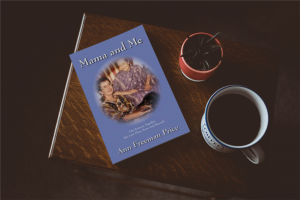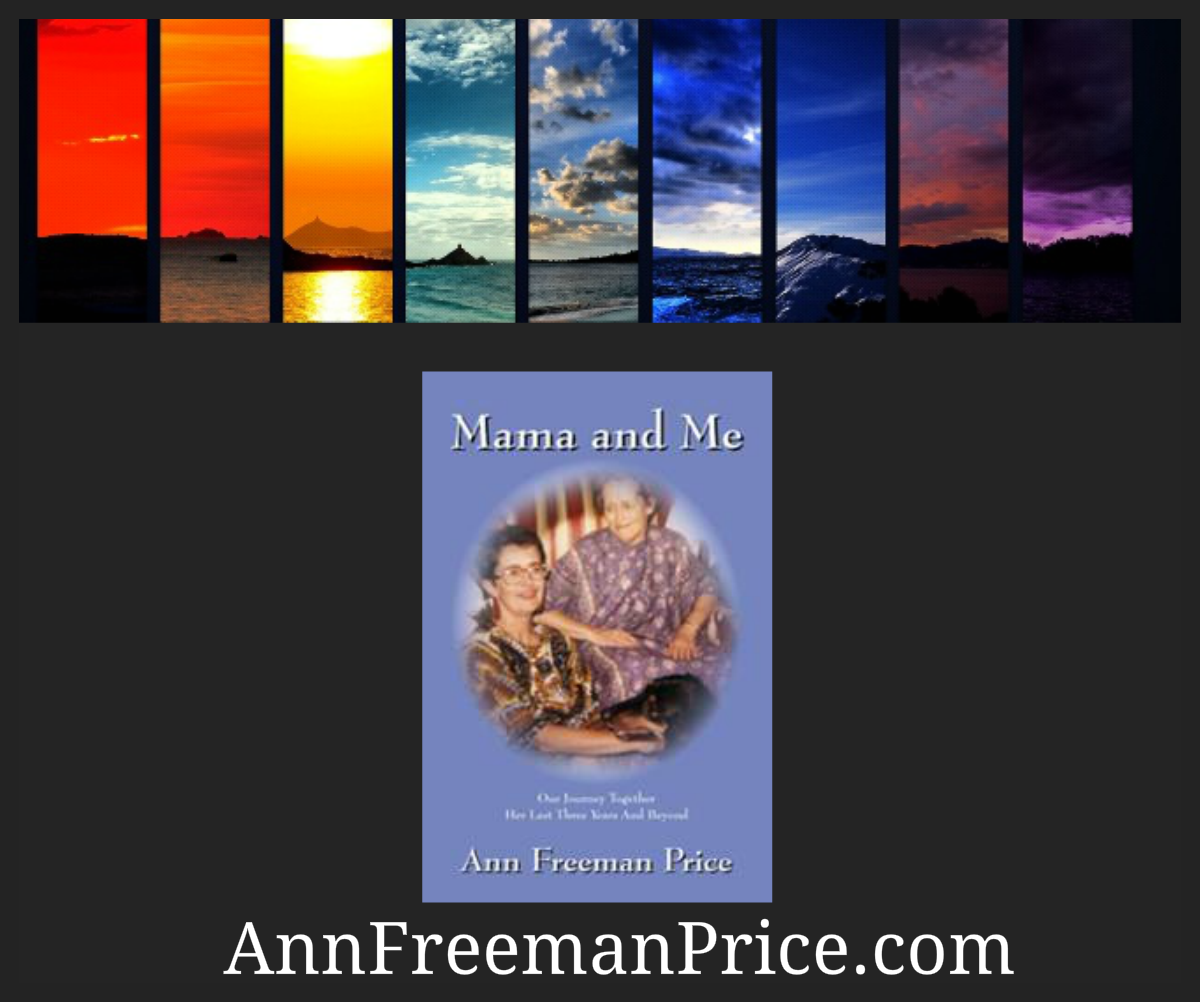Poet, Author, Composer....
The Choice
 In June I read two books by Dr. Edith Eva Eger and I believe that in some way they apply to each person although the details may be extremely different.
In June I read two books by Dr. Edith Eva Eger and I believe that in some way they apply to each person although the details may be extremely different.
The first is The Choice–Embrace the Possible. It is a memoir of parts of Dr. Eger’s life. She survived the Holocaust and time in the camps. Her father, mother, Eva and her sister were taken and she and her sister survived.
But this is primarily a survival story with ways to apply it to your own life. She made a new life for herself in this country, worked to get a Ph.D and set up a practice and to help other people heal from all kinds of trauma.
At one point she writes: When we grieve, it’s not just over what happened–we grieve for what didn’t happen.
Her other book is titled The Gift–12 Lessons to Save Your Life. This is a shorter book and focused on the lessons she and all of us can learn. At the end of each chapter in this book there is a page of bullet points for that chapter’s particular focus. I am still reading them over one at a time just to check out where I am and how I’m doing.
The Choice is hard and inspiring reading. And The Gift is an extremely helpful I read. I recommend reading both.
Cancer–I Decide
 This is a poem from the book Trilogy of Cancer–the Jolt, the Journey, the Joy. I put it together during my first bout of breast cancer; I filled it with songs written to familiar tunes; poetry; and things to do. Now I’m in my fourth bout with cancer and it still holds true.
This is a poem from the book Trilogy of Cancer–the Jolt, the Journey, the Joy. I put it together during my first bout of breast cancer; I filled it with songs written to familiar tunes; poetry; and things to do. Now I’m in my fourth bout with cancer and it still holds true.
—-
I Decide
—
I marched in
halfway through
three months of
treatments and
said with authority
“You said Taxol
would be easier.
It isn’t.”
—
they listened
—
“Today” my voice
was clear. “Today
I want copies of
everything: blood
pressure, temperature,
blood work numbers
everything
—
they gave them
to me
—
“Today is different”
I told calm doctor
as if he didn’t know
“You tell me if it’s
a ‘go’ for today’s
treatment
—
but then you need
to sell me again
on why i’m
doing this
—
give me statistics
name my options
say your best judgment
—
and then
then I’ll decide
if it’s a ‘go'”
—
he did that
—
I decided to
keep going
but on that day
I claimed strength
and power and
control
—
I never let go
of them again
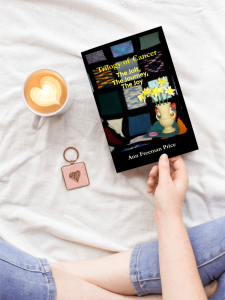 For more information about the Trilogy of Cancer: CLICK HERE
For more information about the Trilogy of Cancer: CLICK HERE
That Aging Thing
Here’s a tiny story that didn’t make it into the Daybook of My Personal Faith. I’ve changed the grandchild’s name—but the point remains the same:
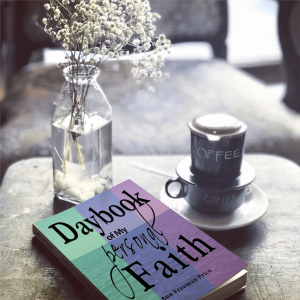 I decided quite early that I was not going to be coy about how old I was, because it fits into the ageism that we have in the society. There were certainly times when someone (almost always a man) would say to me and one of my daughters “My goodness, I thought you were sisters!” I would say, “You know, you need to get your eyes checked!”
I decided quite early that I was not going to be coy about how old I was, because it fits into the ageism that we have in the society. There were certainly times when someone (almost always a man) would say to me and one of my daughters “My goodness, I thought you were sisters!” I would say, “You know, you need to get your eyes checked!”
There was another time when my grandson, Charley and I were in the grocery, and in the checkout line. Charlie said in a loud voice, “Now! I am four and you are 60.” I said, “Right,” as several people turned to look.
Then Charlie said “When I am five, you will be 61.” Again I said, “Right.”
Then he asked, “When I am 10, how old will you be?” I said, “Sixty-six.”
People were still looking, and even more of them were smiling.
Charlie was quiet for a minute as he thought and then he said, “When I am 51, how old will you be?” I grin, and say victoriously, “One hundred and seven!”
Learn more about the Daybook of My personal Faith
May 20–Execution of Quintin Phillipe Jones Carried Out
May 20th—Execution of Quintin Phillipe Jones Carried Out
A few days ago I posted about the upcoming execution of Quintin Phillipe Jones. I urged people to write the governor of Texas and ask that his sentence be changed to life in prison. I did that. A hundred and seventy thousand people signed the petition asking the governor for that change.
The state of Texas executed him on May 19th.
Suleika Jaouad, the journalist who has been in communication with him for twelve years, was quoted in the US Sun: “The world is not a better place because Quin is gone.”
And for me, that is the reality. The death penalty adds another layer of violence to the society, and worse still, it is carried out BY the society.
Gandhi once said “Evil means, even for a good end, produce evil results.”
And Winslow Myers in his book Living Beyond War wrote: The means are the ends in the making.
For me, it is not justice. It is violence.
Death Row
Clemency for Quin
On September 19 in the book I published Daybook of My Personal Faith, the subject matter is the death penalty and the reasons I believe it should be abolished.
 Last night at 10:30pm I wrote a letter to Governor Greg Abbott of Texas asking him to commute the sentence of Quintin Phillipe Jones who is currently set to be executed on May 19th.
Last night at 10:30pm I wrote a letter to Governor Greg Abbott of Texas asking him to commute the sentence of Quintin Phillipe Jones who is currently set to be executed on May 19th.
This is an instance where the person to be executed admits that he did what he was charged with, and has deep regrets about that action, but he has turned himself around. Now he is asking to spend the rest of his life in prison.
Two things from the September 19 entry ring clear to me in this case: 1) the crime which he committed happened in 1999 and he is now a different person. 2) change is always possible and once the person has been executed society ends that possibility. In my belief system, God never gives up on anyone and asks me to do the same–not give up on that person’s ability to change.
There have been others who served out their life within prison walls and did good things with that time. I hope this man will get that opportunity.
Quintin Phillipe Jones will continue to be in my prayers. And I’ll spread the word urging people who feel as I do to write Governor Abbott. If you agree, I urge you to do the same.
To learn more about Quintin: clemencyforquin.com/
To sign the petition to the Governor of Texas: CLICK HERE
Write the Governor of Texas: CLICK HERE
A Prayer and a Memory
 I was looking ahead in my published Daybook of My Personal Faith and in August I came to a poem I wrote titled “The Word and the Breath.” The minister referred to in that posting was Janice Sutton Lynn, and re-reading that poem and thinking of Janice again sprung me over to another memory.
I was looking ahead in my published Daybook of My Personal Faith and in August I came to a poem I wrote titled “The Word and the Breath.” The minister referred to in that posting was Janice Sutton Lynn, and re-reading that poem and thinking of Janice again sprung me over to another memory.
I have a place in my morning routine when I talk to God out loud as I lie in bed. And last week as I prayed, I said “Help me to remember…” and the phrase instantly brought this memory of Janice to mind.
She served as minister of Sparta United Methodist Church for five years and one of her amazing gifts was her relationship with the children of the church. In the halls she instantly knelt down to be able to talk with them on their level. She knew their names. She knew what was going in their lives.
And on Sunday morning when she was giving the children’s sermon, they scrambled quickly up to the altar to sit with her. They participated, answered questions, asked some of their own, and then at the end Janice and the children developed a prayer ending.
She would say “let’s pray” and some child would say “Dear God” and everyone, including Janice, would echo “Dear God.” Then she would continue with a short prayer and it too was an echo prayer and the children (and the congregation) would echo each phrase of hers.
Usually at some point near the end she would say “Help us to remember…” and I can still hear the lilt of her voice. The children would echo “Help us to remember” and she would go on with the prayer.
Well, last week as I said my prayer and happened to say those words again, I thought immediately of Janice and the lilt of her voice, and smiled in thankfulness that we had had her for those five years.
I also thought how profound for me and for the children it was to say fairly constantly “Help me to remember…” because it reinforced that despite my very good intentions I do forget and that it’s a good prayer to ask God to remind me. Plus it’s reassuring to know that God will do that, without recrimination, without judgment (I would think you would remember yourself), just lovingly remind me again of whatever stumbling block I have come up against once more.
Our minds are interesting–in their darting from year to year, in their collections of memories, and in their holding carefully those things that we will need again. And that too is a gift from God.
Learn more about: Daybook of my Personal Faith
Richard Deats, a Friend
I lived in Rockland County, New York, in the town of Pomona and I think I met Richard in one or more of the many cooperatives that had been formed in that county. Then he introduced me to the Fellowship of Reconciliation, the oldest peace group in the world, located in Nyack, NY, just about thirty minutes from where I lived. And Richard became a friend. He died this month, on April 7, and these are just a few of my memories.
I loved his deep dedication to peace, lived out in his life. He worked for the FOR and traveled the world making peace. At the very same time he held his sense of humor, his lightness, his love of making music, and his word play. I could rarely say something to him without him turning some word around or upside down and causing a smile or laugh between us.
Eventually I bought a house right across the street from him and we and his family became solid friends. Jan, his wife, is a professional musician. Many of his children were involved with music. I can remember one time in my house hearing drumming. I went out the front door–looked across the street–and found some of his young adult children on the roof of their house, drumming away.
He traveled all over the world training others in non-violence. He believed with a very deep knowledge in the power of non-violence to work. He told me of non-violence training he did (I believe in Korea) where it was forbidden for the people to sing “We Shall Overcome,” and he said, “at every church service, at every gathering, with obvious government people present, they would sing it–strong and full of life.”
Sometimes I would see him out in front of his house gardening, and I would cross the street and we would talk. He was always ready to pause, tell a story, laugh with a friend.
And finally each year there was a gathering after Christmas and before New Year’s of singing carols in their livingroom–old ones, new ones and finally the lighting of the Christmas tree–real tree, real candles and a feeling of peace come once more to the world.
Good memories of a good friend—set free now. Tonight I’ll sit outside with a candle and sing a song of peace. Perhaps he will be singing too.
(On the internet, go to: wagingnonviolence.org and scroll down to find “Remember Rev. Richard Deats.” See his picture and read more of the scope of his life written by Ethan Vesely-Flad, director of national organizing for the FOR, and John Dear, long time peace activist, former executive director of the FOR and now director of the Beatitudes Center of the Nonviolent Jesus.)
Catching Up
 Here’s the poem for a couple of days ago and it’s a continuing feeling. Anybody else feel it???
Here’s the poem for a couple of days ago and it’s a continuing feeling. Anybody else feel it???
I start out in the morning with a good sized list,
I mean to check it off one by one,
and I work pretty steady doing my best,
but I never get everything done.
so I clap my hands, then stamp my feet,
and promise myself that tomorrow will be better,
but every single day I slip farther back
I wonder if I’ll ever catch up—
yes, I wonder if I’ll ever catch up.
Mandalas in the Daybook
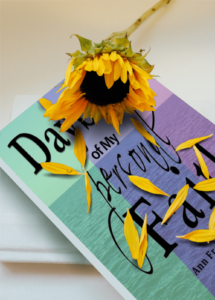 This morning I colored the January mandala in Daybook of My Personal Faith and in a few days will catch up with February’s. It was titled “Step by Step” and really explained how I sometimes get from point “a” to point “b,” or how I get a discipline started, or even how I get a book read on time. And then the mandala itself showed steps.
This morning I colored the January mandala in Daybook of My Personal Faith and in a few days will catch up with February’s. It was titled “Step by Step” and really explained how I sometimes get from point “a” to point “b,” or how I get a discipline started, or even how I get a book read on time. And then the mandala itself showed steps.
This morning because of earlier reading I had already been thinking of different economic models of living, and of being a witness to what I believe in, and along with step by step, it just all meshed together.
It was a wonderful time. I used colored pencils, primarily because I thought that markers would bleed through to the other side of the page. And I found that the colored pencils had a quiet meditative feel to them. And to my surprise I could vary the background and make a sort of shady part. I used coloring the mandala as my meditation time, and breathed differently afterwards.
I was thinking afterwards that sometimes I approach some thing as if there are rules about it—when really you can make up your own rules. And I think that’s true of coloring mandalas. You can think deep thoughts. You can pray. You can just enjoy the beauty of what you’re doing.
There was one year where I started with a circle and I drew my own mandala—in fact that’s where the mandalas in this book came from. Sometimes they had a meaning. Sometimes they didn’t.
Try coloring a mandala yourself. It’s time well spent. Relax and enjoy.
